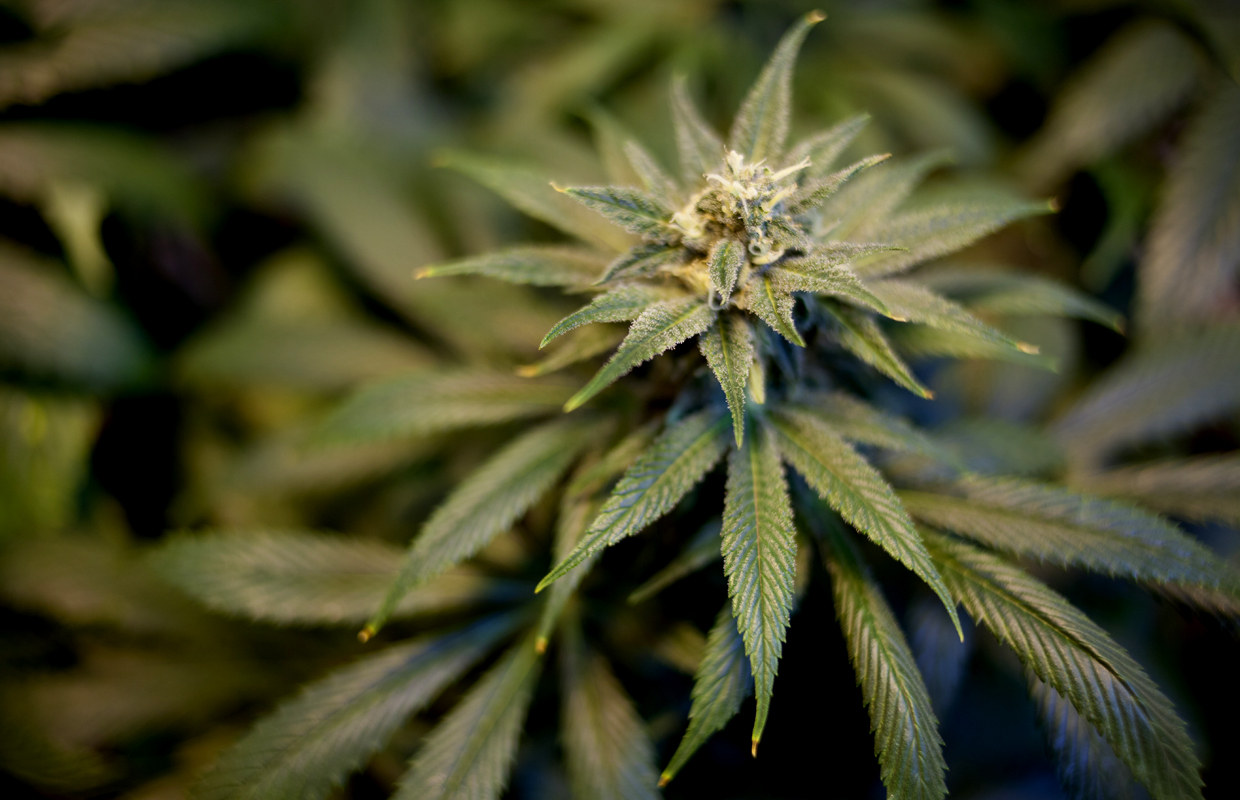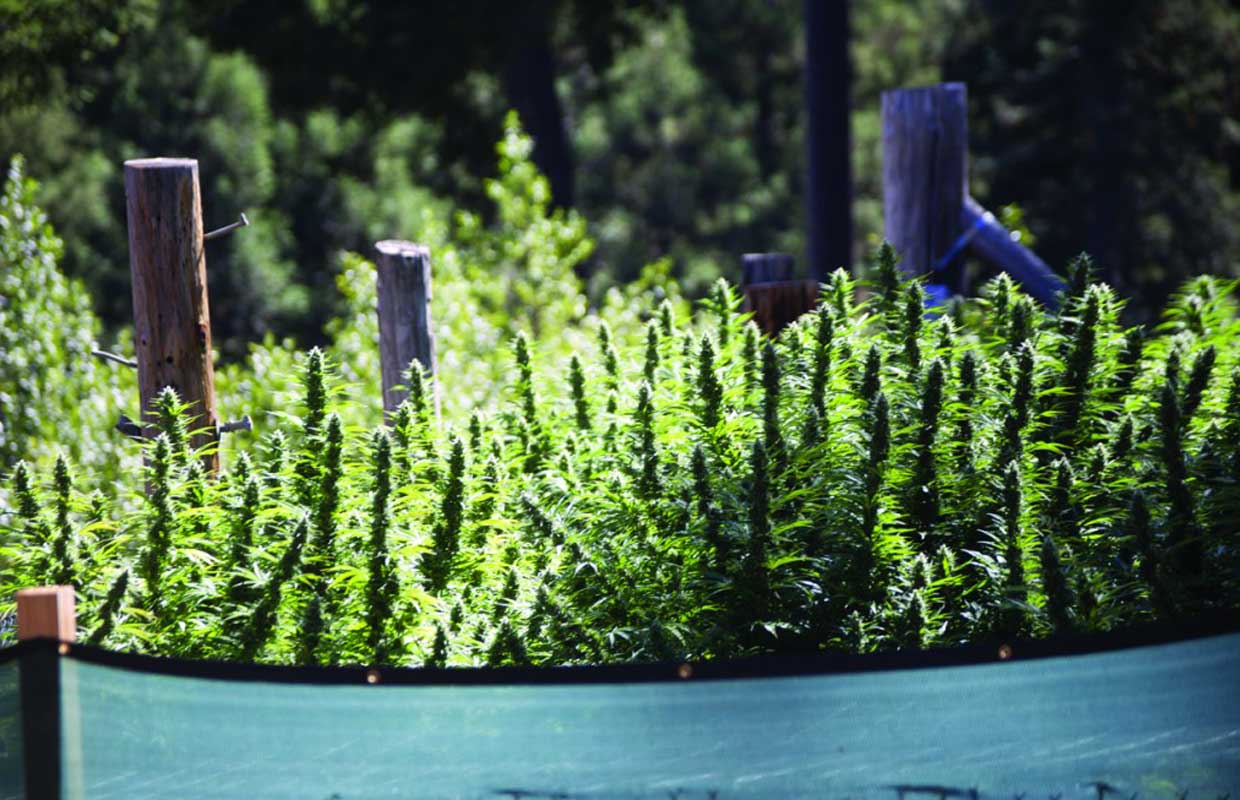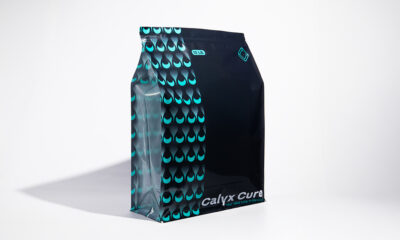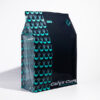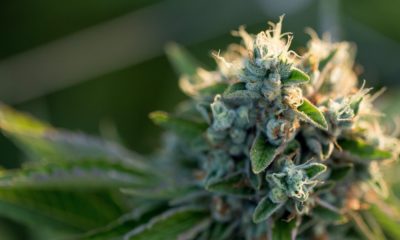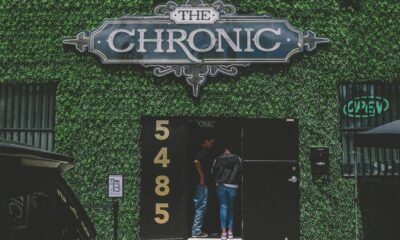In The Magazine
Inside I-502: What You Need to Know About Legal Cannabis in Washington State
Benjamin Franklin once said, “Laws too gentle are seldom obeyed; too severe, seldom executed” — nowhere else does government test this statement more than with Washington’s marijuana laws.
On one end of the spectrum, the state’s medical marijuana laws provide only a handful of relatively vague provisions which boil down to the general rule that qualified patients may grow 15 plants individually or 45 plants collectively.
There are no packaging and labeling requirements, no requirements to track product, no rules regarding transportation, etc. As a result, the medical marijuana industry is largely self-regulated under a patchwork of industry-created best practices.
The pendulum swung swift and far in the other direction when it came to recreational marijuana. Washington voters passed Initiative 502 in November 2012 and the initiative outlines a strictly regulated recreational marijuana market, administered by the Washington State Liquor Control Board (WSLCB).
Close to one year later, in October 2013, the WSLCB enacted 43 pages of additional rules and regulations imposed on licensees. Whether you welcome this development or scorn it, there is little debate that few similarities exist between a medical collective garden and a licensed recreational grow under Initiative 502.
This article provides an overview of Washington’s rules and regulations concerning licensed, recreational growing under Initiative 502 and documents how those rules depart from the state’s largely unregulated medical marijuana collective growing model.
Three Licenses: Producer, Processor and Retailer
To provide a basic introduction, there are three marijuana licenses under Initiative 502: producer (grower), processor and retailer. Unlike Colorado, in Washington, an entity, or principal within an entity, cannot hold all three licenses. Applicants are limited to either holding a producer and processor license, or a retailer license.
The window to apply for a marijuana license closed back in December 2013. The WSLCB has stated that a new window to apply may open when the market deems it necessary — which is really anyone’s guess at this point.
There were over 2,700 producer applications. The WSLCB recently issued a handful of producer licenses. The remainder of the applicants are in varied stages of the licensing review process, with hundreds still waiting for an initial phone interview with a WSLCB investigator.
If you are still interested in joining the action, it is not too late to invest in a license applicant or find employment. Investors must qualify with the WSLCB, which requires three months of Washington state residency, minimal criminal history, a verifiable source of funds, and a signed attestation that you are current on all tax obligations, as an individual or as part of an entity in which you are an owner. Employment in the industry does not require the same qualifications, but both employees and investors must be 21 years of age.
Growers — “Producers”
Location: State-imposed 1,000-foot buffer measured from property line to property line
-Elementary or secondary school
-Playground
-Recreation center or facility
-Child care center
-Public park
-Public transit center
-Library
-Any game arcade (where admission is not restricted to persons age 21 or older)
A producer license allows one to grow, harvest, trim, dry and cure marijuana. That’s about it. Producers cannot extract concentrates, infuse products, or package and label product. Those activities may only be done by a licensed processor.
Producers may sell seeds and clones to other producers, or may sell dried flower (referred to as “useable marijuana”) to other processors. They may not sell to retailers.
All wholesale transfer to another licensed processor or producer incurs a 25 percent excise tax. For that reason, many producers also acquired a processor’s license; although, some — for sound business reasons discussed later — did not choose to do so.
Location
One of the biggest challenges facing producer and processor license applicants is securing a compliant location. Both state and local governments impose restrictions that limit available properties.
Under state law, a licensed facility must be 1,000 feet from a number of child-related uses and buildings. In dense, urban areas, this 1,000-foot buffer can wipe out almost all available properties. Add local zoning restrictions on top of that and the challenge becomes even greater.
At the time this article was written, a number of local cities had active, interim zoning moratoriums on licensed marijuana business. The Center for the Study of Cannabis and Social Policy determined that of the 75 most populous cities, 37 percent enacted moratoriums on licensed marijuana businesses and 7 percent enacted outright bans. Many of these local governments will likely allow for licensed marijuana facilities in the future, but until then, these areas are effectively off limits.
Even assuming a city or county’s zoning ordinance or interpretation permits licensed marijuana business to locate there, many zoning ordinances are prohibitively restrictive, imposing setbacks or minimum lot sizes that applicant’s may not be aware of. Other ordinances require conditional use permits which are costly and time consuming.
Plant Canopy Limits
Producer License – Canopy Size Limit (square feet)
Tier 1: 0 – 1,400
Tier 2: 1,401 – 7,000
Tier 3: 7,001 – 21,000
Currently, the WSLCB has limited the statewide plant canopy for marijuana to 2 million square feet. Many argue this is significantly below market demand. As a result of this statewide cap, producers are limited on the size of their grow.
Originally, the WSLCB allowed a single licensing applicant to apply for three producer licenses at 30,000 square feet of canopy, for a maximum of 90,000 total square feet. In light of the over 2,500 applicants, however, the WSLCB significantly curtailed its original allotments of square footage per license.
Now, a license applicant is limited to one producer license — the other two may be placed on hold — with that single license growing a maximum of 21,000 square feet of canopy.
This stopgap measure will likely fluctuate in the coming months and years. Many presume that the WSLCB will increase the statewide cap in the near future, especially if the state legislature eliminates collective medical grows and requires patients to acquire marijuana from licensed retail stores.
Given the limitations on the number of licenses and the plant canopy per license, many project that the Washington market will be comprised of largely small “mom and pop” growers. It is unclear how successful these smaller operations will be at absorbing overhead expenses associated with compliance and the onerous taxing scheme.
Finances
Applicants are also struggling to acquire sufficient up-front funding to get through the lengthy licensing process. Since banks are largely out of the picture, license applicants must rely on personal savings or private equity. But even private equity has limitations, since all financiers — defined to include anyone who gives money, including gifts and loans — must qualify as an applicant, which requires at least three months of state residency.
Warnings that must be on all labels of useable marijuana or on material accompanying a purchase of useable marijuana
-“Warning: This product has intoxicating effects and may be habit forming. Smoking is hazardous to your health.”
-“There may be health risks associated with consumption of this product.”
-“Should not be used by women that are pregnant or breast feeding.”
-“For use only by adults 21 and older. Keep out of reach of children.”
-“Marijuana can impair concentration, coordination, and judgment. Do not operate a vehicle or machinery under the influence of this drug.”
-“This product has intoxicating effects and may be habit forming.”
-“This product may be unlawful outside of Washington state.”
In addition, the WSLCB requires applicants to secure all initial start-up expenses and to disclose the sources of funds at the outset of the application process. For some, this is a cart before the horse problem, as investors are hesitant to commit funding to business that has yet to become licensed.
Processors
As mentioned above, processors serve as the middleman. Because there are no distributor licenses, processors incur the costs associated with marketing product to retail stores and transporting product within the state. Processors are also responsible for all extractions and infusions of product.
As mentioned, some licensees did not apply for both a producer’s and processor’s license. Mostly we see this with sophisticated extractors who could not grow enough to supply their extraction needs, or with processors hoping to serve as a distributor for multiple producers.
Packaging and Labeling
Packaging will play a larger role than many may have initially anticipated. First, there is an abundant number of warnings and information that must fit onto the label or on additional written material that must accompany every product.
Second, infused products must be sold in child-resistant packaging, which may require more sophisticated packaging equipment than is currently being used in the medical market. In addition, the state requires that all products for sale be pre-packaged, including flower (useable marijuana).
Gone are the days of weighing and measuring flower at the dispensary. In Washington’s recreational market, all dried flower will be individually packaged in sealed containers by the time it reaches the retail store. If a customer wants to smell the product, processors may provide retailers very small quantities of useable marijuana in a container with a mesh top. No other “open containers” are permitted. Given the quantity limits for such “samples,” however, it is unlikely all varieties of strains and products for sale will be available for this type of consumer inspection.
On-site Consumption
On-site consumption is strictly prohibited at all licensed facilities. Thus, although a producer is permitted to test his own product—albeit only in very small quantities—it must be done off-site. In addition, all products must be tracked, so growers cannot reward an employee with product or offer product to friends and family. This type of distribution by a licensed producer and processor, to a non-licensed person or entity, can result in the cancellation of a license.
Tracking — “Seed to Sale”
I’ve mentioned tracking a few times. Many are familiar with the “seed to sale” concept of tracking. Tracking will likely become a full time job for some licensed producers. The rules require that all “key” events be tracked and uploaded into the state’s traceability software system. Don’t be fooled by this language, “key” includes practically all events. The big events are no surprise: quality assurance test results, transportation and sale of product. But tracking is also required of smaller events, such as sampling and waste.
Bio-Tech Medical Software, Inc. (BioTrackTHC) designed the state’s traceability software. Producers and processors may choose to use the state’s system free of charge or purchase a supplemental third-party software provider, so long as it allows for the collection and submission of the required information and reports. The state released two technical documents detailing the BioTrackTHC technical interfaces for both XML and JSON platforms.
Testing
Many in the industry are pleased with the requirement that all product go through rigorous quality assurance testing by certified labs. The state will require testing of both the flower and infused products. Testing includes moisture content, potency analysis, foreign matter inspection and microbiological screening. The WSLCB recently released the accreditation criteria for lab certification.
Transportation
The WSLCB rules set strict limitations on transporting product. Only an employee may transport product and product must be located in a locked storage compartment secured to the inside of a vehicle. We anticipate that the WSLCB will amend this rule in the near future, to permit locked trailer trucks (to allow for the transport of plants and clones) as well as secured delivery vans.
Environmental and Other Permits and Licenses
If you thought you were good to go with a marijuana license, think again. Unlike medical marijuana, recreational growers will be under a microscope from all government regulatory bodies. As a result, compliance is the name of the game. This means licensed entities will need the full gamut of local and state approvals, which may include: a city business license; change of use permit; conditional use permit (depending on local zoning laws); reseller permit; weighing and measuring devices license; water quality permit and applicable building permits for construction and build-out. If you plan on growing in an illegal, non-conforming outbuilding on your property, think again. Basement grows in a residence are also out of the question.
Consumer Transaction Limits
-1 ounce of useable marijuana
-16 ounces of solid infused product
-72 ounces of liquid infused product
-7 grams of concentrates.
So you know you can grow, but what can you sell? The law is very particular about how much a single consumer can purchase, both with regard to quantity and potency.
Quantity limits were spelled out in Initiative 502, and the state legislature recently amended the law to expressly allow for concentrates. Accordingly, the consumer transaction limits are as follows: 1 ounce of useable marijuana; 16 ounces of solid infused product; 72 ounces of liquid infused product; or 7 grams of concentrates.
Packaging for infused products is also limited by potency. One unit/package of infused product is limited to 100 mg of THC (or 10 servings, at 10 mg of THC per serving).
It is likely that concentrates will also be limited to 1 gram per package/unit; allowing a consumer to purchase seven units in one transaction.
Not to be forgotten, the rules also restrict the amount of plants and products onsite at any time. An outdoor grow is limited to one and a quarter of a year’s harvest, and an indoor grow is limited to six months of a year’s harvest. Processors are limited to six months of average useable marijuana and total production onsite at any time.
Crime and Theft
There is, unfortunately, a common fear expressed by concerned citizens that licensed producers will bring crime and violence to their neighborhoods. This excuse is at the top of everyone’s list when they cry out against legalization or attempt to justify enactment of a local zoning moratorium. Scratch beneath the surface, however, and this claim is nonsense.
The idea that marijuana breeds crime is based on the outdated premise that marijuana is largely controlled by gangs and criminals. In actuality, under Initiative 502, licensees are legitimate business owners, subject to rigorous criminal and financial background checks.
In addition, state-mandated security requirements on licensed facilities are unprecedented. The entire facility, and some exterior vantage points, will be under 24-hour video surveillance. Theoretically, locating a licensed grow in an otherwise half-vacant industrial area would result in a safer community, as it places a large portion of vagrant activity and nearby street crime under constant surveillance.
The relationship between law enforcement and marijuana is also changing. Unlike in the medical market, where growers and patients were hesitant to call police after theft or a robbery, under state licensing law enforcement will play an active role in protecting and safeguarding the operations. For one thing, the state will be notified in the traceability system whenever there is an instance of theft.
Moreover, stealing from a licensed grower is like stealing from the state, since it deprives the state of significant tax revenues.
Insurance will also play an important role. Unlike with medical grows, licensed recreational producers are required to carry substantial insurance, which, depending on the policy, may cover instances of theft.
Penalties
Violations that result in cancellation of license upon first incidence
-Purchase/sale to unauthorized source
-Sales in excess of transaction limits
-True party of interest violation
-Failure to furnish required documents
-Misrepresentation of fact
Penalties are generally overlooked by applicants at this stage of the game, but because they play such a pivotal role going forward, they should be considered at the outset. In the medical market, the penalty for noncompliance was generally criminal charges and jail time. A severe consequence—but what it lacked for in compassion, it made up for in simplicity.
Under Initiative 502, the penalties are copious, with varied severity. In total, there are over 40 penalties—if there is a rule, there is a corresponding penalty for noncompliance. Violations result in fines, suspensions, destruction of plants/product, or cancellation of a license.
There are five violations that result in cancellation of a license upon the first incidence: (1) Purchase/sale to an unauthorized source; (2) Sales in excess of transaction limits; (3) True party of interest violation; (4) Failure to furnish required documents; and (5) Misrepresentation of fact.
Other violations are considered over a three-year window, measured from the date of the earlier violation to the date of a subsequent violation.
For example, the first incidence of a sale to minor carries a $2,500 fine or 10-day suspension; the second violation, within a three-year window, carries a 30-day suspension and the third violation, within a three-year window, may result in the cancellation of a license.
As another example, the first incidence of a producer’s failure to utilize or maintain traceability carries a $2,500 fine; the second incidence, within a three-year window, carries a $5,000 fine and destruction of 25 percent of harvestable plants; the third violation, within a three-year window, carries a $15,000 fine and destruction of 50 percent of harvestable plants and fourth violation, within a three-year window, may result in the cancellation of a license.
These are serious consequences for what could be innocent oversight or mismanagement, for that reason, knowing the rules and hiring qualified employees is imperative. Upon receiving notice of a violation, a licensee may accept the penalty, request a settlement conference, or request an administrative hearing.
In addition, it is safe to assume that although these penalties are civil, they may also result in a criminal investigation and criminal charges under the state’s controlled substances act if the violation includes distribution to an unlicensed entity.
Don’t Worry, There is More . . .
This article only skims the surface on Initiative 502 rules and regulations. Please be aware there are numerous other provisions, including requirements on waste disposal; severe limitations on advertising (both in content and placement); limitations on allowable fertilizers and soil amendments; general sanitary practices; restrictions on signage; requirements on record keeping and tax reporting and so on.
For more information, visit the WSLCB’s website at www.liq.wa.gov or review applicable rules and regulations, chapter 69.50 RCW and chapter 314-55 WAC.
By Kurt and Stephanie Boehl
The KB Law Group PLLC is located in Seattle, Wash. Legal services include Washington state marijuana regulatory compliance, business formation and advising, and the zealous defense of those accused of a crime.



